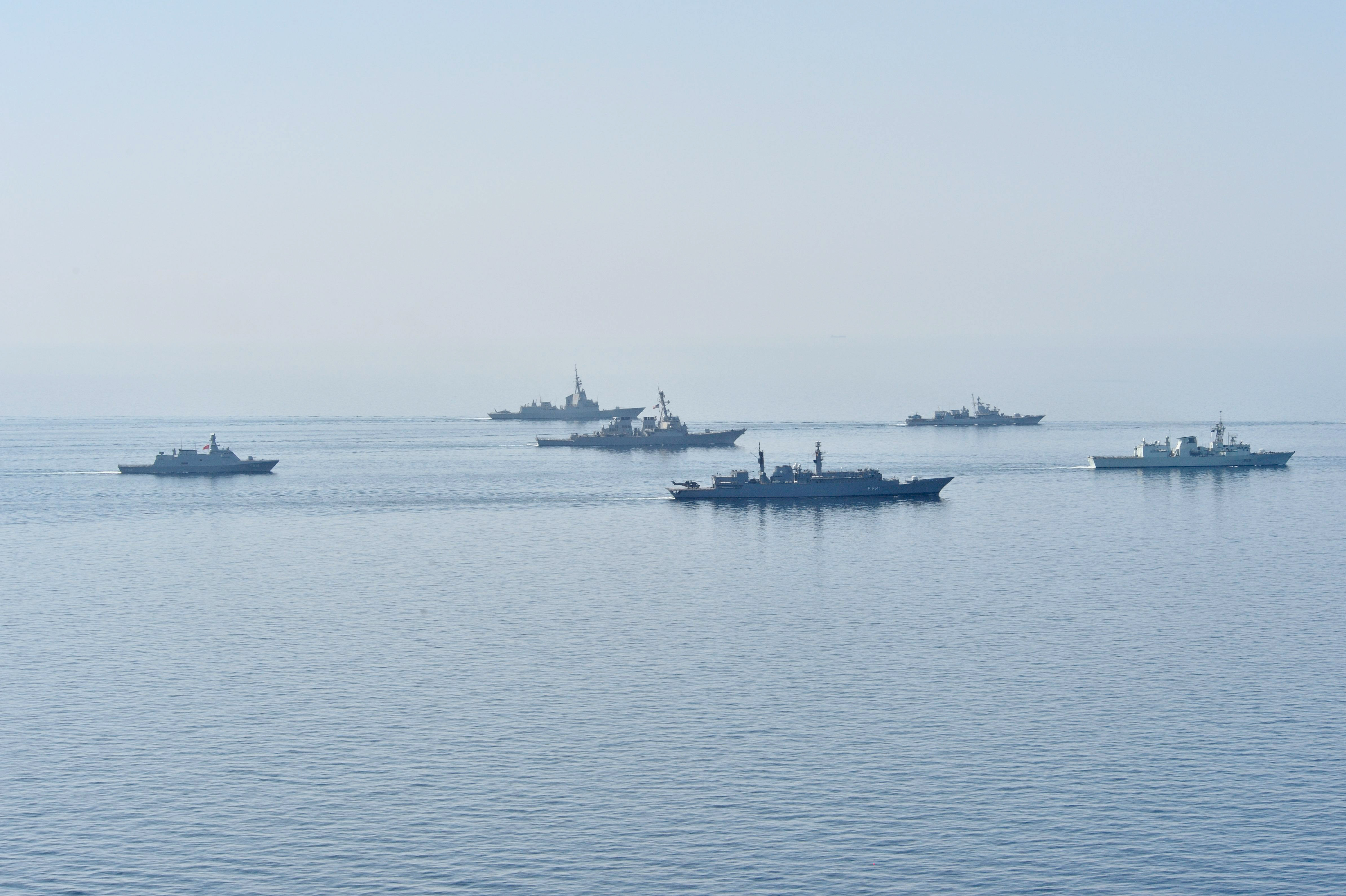
At the Surface Warship Summit in Bucharest, Romania, from Jan. 26 to 28, the commander of NATO’s Allied Maritime Command, Vice Adm. Clive Johnstone expressed concerns regarding several escalating situations in the Mediterranean.
The Islamic State in Iraq and Syria (ISIS), which has consolidated its area of control along Libya’s Mediterranean coast, is attempting to increase its naval capabilities to attack maritime targets with anti-ship weapons in the vein of Hezbollah.
Johnstone also talked about the issue of Russia’s increasing presence in the Eastern Mediterranean, spurred on by its commitment to Syria and the expansion of the naval base in Tartus. On 17 February retired Adm. James Stavridis echoed many of Johnstone’s fears regarding the Islamic State and Russian adventurism. Stavridis also raises the issue of the 1.2 million refugees who have crossed to Europe, a number that will only increase and is overwhelming many states.
There needs to be a response to those compounding threats along Europe’s southern border, and NATO and the EU are the best-suited organizations for this. They have gained valuable experience during operations off the coast of Somalia; a new combined naval task force centred on the Mediterranean would go a long way in providing a unified command in combating issues facing Europe today.
Reevaluating the Threat Picture

NATO command’s worries that the Islamic State in Libya (ISL) will obtain advanced anti-ship weaponry and the accompanying comparison to Hezbollah are misplaced. While it is true that Hezbollah has a variant of the Chinese Silkworm missile, those were not obtained on the black market. Instead, Hezbollah obtained them through their state backers Syria and Iran. The absence of those weapons does not negate the threat from Islamic State forces, either in Libya or the Sinai Peninsula. They have already conducted attacks against maritime targets from land, and launched limited attacks against an oil port in Libya; those attacks used simple anti-tank and other lighter weaponry, to which ISL already has access. As ISL’s knowledge and experience of operations at sea grows, the risk of Somalian-style piracy and suicide attacks similar to the bombing of the USS Cole (DDG-67) in 2000 increases. ISL and Sinai-based groups do not need anti-ship weaponry to spread fear in the Mediterranean and they are not going away any time soon.
Spurred on by the conflict in Syria, Russian forces have become increasingly confrontational and daring, creating a direct challenge to NATO and the EU in the Black Sea and the Eastern Mediterranean. The Russian navy has revived the Soviet-era practice of permanently stationed ships in the Mediterranean, with large destroyers and cruisers beginning to patrol in January 2016. With NATO struggling to respond to Russian advances, those ships have become a threatening dagger to the belly of Europe. The very presence of Russian ships in the region has caused additional tensions, and with several NATO members and allied states close by, the threat cannot be taken lightly and remain unchecked. This comes at a time when increased tensions between Turkey and Russia, especially after the Turkish military shot down a Russian plane in Syria.
The ongoing migrant and refugee crisis presents a third crisis in the Mediterranean. With more than 1 million people having crossed into the continent in 2015 alone, European states have sought to either stem or assist the wave of humans. The situation has become increasingly untenable, with Germany and Sweden having reversed their policies from directly inviting people to imposing temporary border checks. Most recently, NATO agreed to deploy three ships to the Aegean to support Greek and Turkish efforts to stem the tide of refugees: a supply ship, and two smaller frigates.
Opportunity to Respond

Current NATO-led efforts in the Mediterranean are insufficient, and Vice Admiral Johnstone has recognized this issue, and has called for more ships to be sent. Beyond the newly-deployed three-ship flotilla, the alliance has been conducting Operation Active Endeavour, which has been patrolling in the Mediterranean since 2001. However, with only three to four ships deployed at one time, the mission is severely undermanned for an area as large as the Mediterranean. Two separate, understrength flotillas are simply not enough to counter the increasing pressure coming under Europe.
The EU has already conducted successful long-term maritime operations against existing threats. The EU led Operation Atalanta off the coast of Somalia has been successful and proved a useful training ground for many states—most of which need to take an increased role in the Mediterranean—and functioned in conjunction with a similar NATO-led Combined Task Force 151. With many more than three ships at its largest, the operations were successfully able to coordinate and function under unified command. Using these operations as a baseline, uniting and expanding the two existing operations in the Mediterranean under a new “Operation Mare Nostrum” would provide a base organization for an appropriate response for three widely different threats. The increased Russian naval presence would be adequately checked, and European states would have a resource for the issue of migrants and refugees. Meanwhile ISL and Sinai-based terror groups would face a roadblock for maritime ambitions, with the added effect of strengthening Operation Active Endeavour’s pre-existing mandate of hindering ISL’s logistical lines.
NATO and the EU need to react and respond with more than a handful of ships—the basic building blocks of a response to all three issues are quantity and presence. While a martime operation modeled by Operation Atalanta would similarily not solve the issues and their underlying causes, such an operation would go a long way toward addressing three of the largest external fears Europe faces today.





